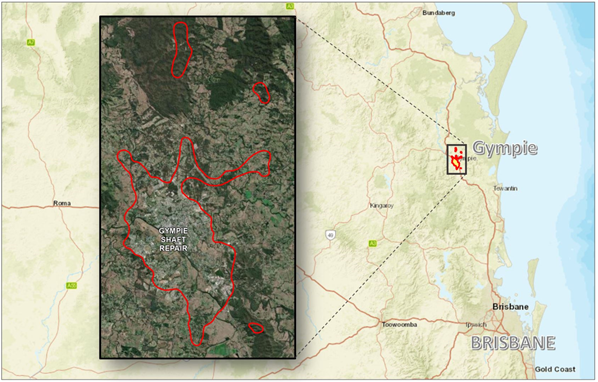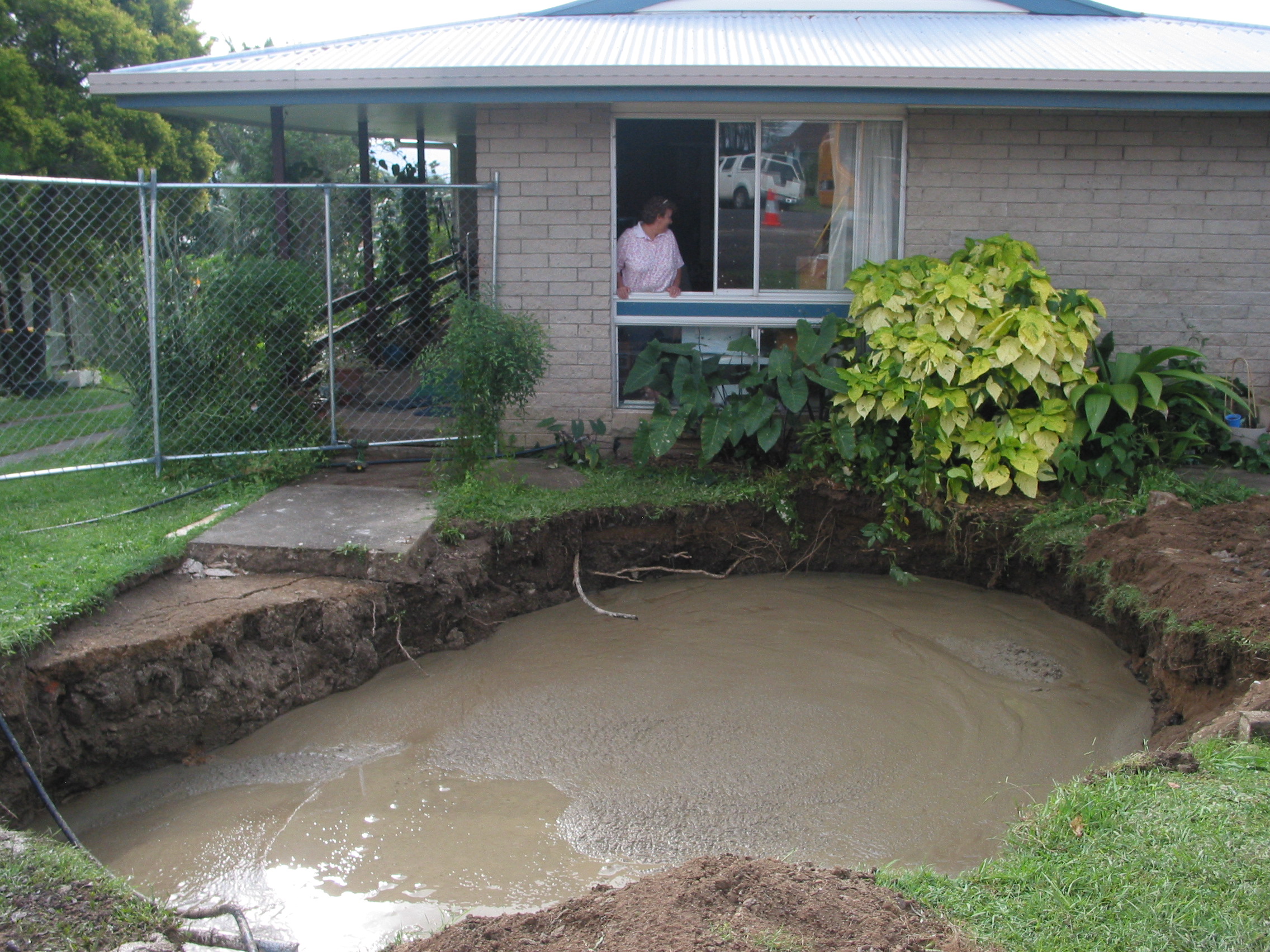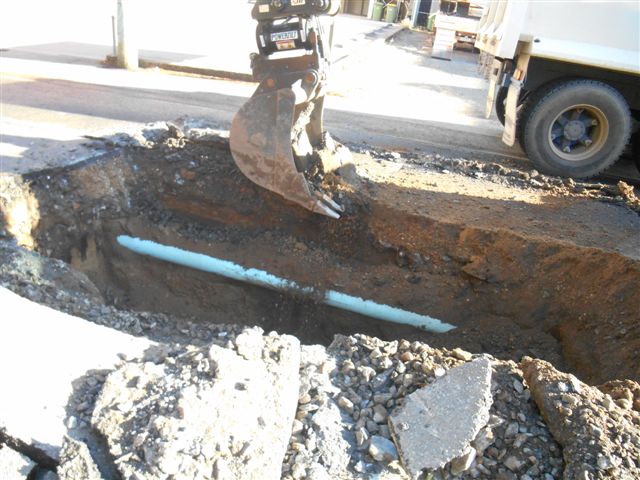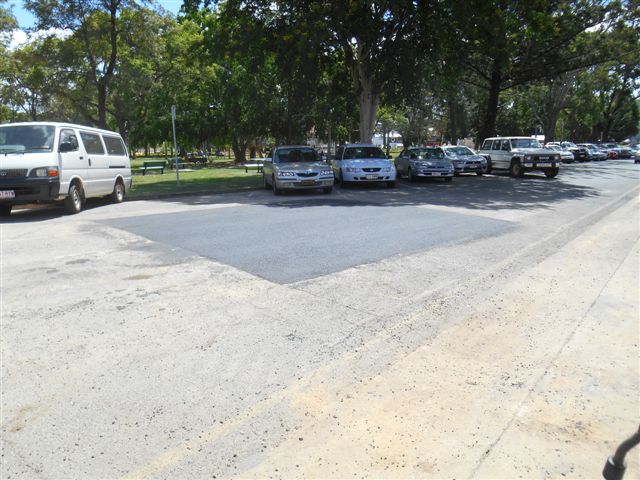Gympie Shaft Repair Program
Gold was discovered in Gympie in 1867, and the field was worked continuously for 60 years until 1927, producing around 3.5 million ounces of gold. Almost all small-scale mining on the Gympie goldfield ceased by 1923; however, some small concerns continued, and mining was still occurring beneath the city in the 1990s.
- View a glossary of mining terms used on this page.
Due to the scale of the mining activities, urban development occurred over many of the old unrecorded or concealed mine workings. As a consequence, mine subsidence and collapses still occur in and around developed areas in the city.
Common causes of subsidence in the Gympie area are historic shafts, old wells, trenches, dumps and unconsolidated fill. During and after periods of heavy rainfall, the saturated ground can weaken. Timbering and other support and blockages covering unfilled historic mine shafts can become stressed and prone to failure, creating the potential for subsidence.
The objectives of the Gympie Shaft Repair Program are to:
- make the abandoned shafts safe and reduce the risk to people and animals
- inform the public about the location of abandoned shafts (for example for land development purposes).
Work is carried out based on an assessment of risks. Reports of possible subsidence are investigated with the highest priority.
If you want information on mining-related activity on a parcel of land in the Gympie area visit GeoResGlobe.
Project snapshot
Region: Southern Queensland
Location: 170km north of Brisbane, Latitude -26.1908730, Longitude 152.6652870
Commodity: Gold
Mining type: Underground
Date of abandonment: N/A
Status: Remediation ongoing
Native title interest: N/A
Public land registers: Some parcels of land listed on the Environmental Manager Register or Contaminated Land Register due to historic mining activity
Photo gallery
Key risks
Health and safety risks associated with subsidence or holes appearing under buildings, in roads, or in areas with unrestricted public access. These events pose significant risks to people and property, particularly after rainfall events.
Completed works
Since the program’s inception in 1990, an estimated $13.4 million has been spent to make safe more than 2,000 shafts in the Gympie area. Of these, more than 900 shafts were capped with concrete caps and more than 1,200 made safe by other means.
Planned works
- Ongoing investigation of notified subsidence events and remediation as required.






